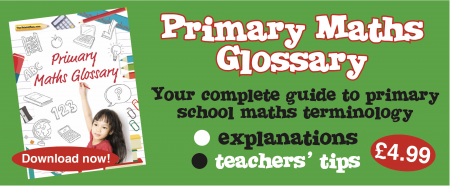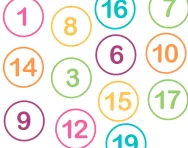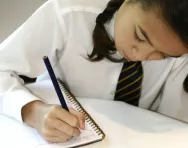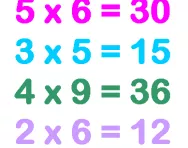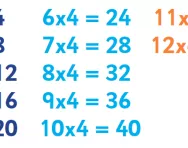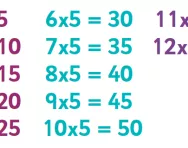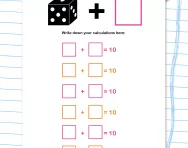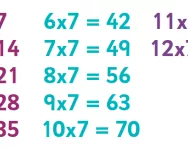Important update from TheSchoolRun
For the past 13 years, TheSchoolRun has been run by a small team of mums working from home, dedicated to providing quality educational resources to primary school parents. Unfortunately, rising supplier costs and falling revenue have made it impossible for us to continue operating, and we’ve had to make the difficult decision to close. The good news: We’ve arranged for another educational provider to take over many of our resources. These will be hosted on a new portal, where the content will be updated and expanded to support your child’s learning.
What this means for subscribers:
- Your subscription is still active, and for now, you can keep using the website as normal — just log in with your usual details to access all our articles and resources*.
- In a few months, all resources will move to the new portal. You’ll continue to have access there until your subscription ends. We’ll send you full details nearer the time.
- As a thank you for your support, we’ll also be sending you 16 primary school eBooks (worth £108.84) to download and keep.
A few changes to be aware of:
- The Learning Journey weekly email has ended, but your child’s plan will still be updated on your dashboard each Monday. Just log in to see the recommended worksheets.
- The 11+ weekly emails have now ended. We sent you all the remaining emails in the series at the end of March — please check your inbox (and spam folder) if you haven’t seen them. You can also follow the full programme here: 11+ Learning Journey.
If you have any questions, please contact us at [email protected]. Thank you for being part of our journey it’s been a privilege to support your family’s learning.
*If you need to reset your password, it will still work as usual. Please check your spam folder if the reset email doesn’t appear in your inbox.
What are number facts?
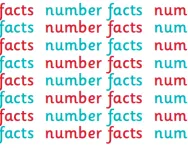
What are number facts?
Number facts are basic addition, subtraction, multiplication and division calculations that children should learn to recall instantly with no working out (in other words, they need to learn them off by heart).
Number facts are sometimes referred to as number bonds (addition and subtraction) and times tables with related division facts (multiplication and division).
When children are taught number facts?
Year 1
In Y1 children learn and use the addition and subtraction facts to 20 (this includes number bonds to 20). This means they will become familiar with and practise all the different combinations of adding and subtracting numbers to a total of 20 (for example, 2 + 16 = 18, 17 – 5 = 12, 5 + 3 = 8, 6 + 7 = 13, 20 – 9 = 11, etc)..
Year 2
In Y2 children consolidate their knowledge of number facts to 20 and develop fluency when recalling the facts (learn them off by heart).
Children also learn to use the number bonds to 20 to derive related facts up to 100; for example, if they know 2 + 3 = 5 then they understand that 20 + 30 = 50.
Multiplication and related division facts for the 2, 5 and 10 times tables are also learned in Year 2. For example, for the 2x table:
1 x 2 = 2 and 2 ÷ 2 = 1
2 x 2 = 4 and 4 ÷ 2 = 2
3 x 2 = 6 and 6 ÷ 2 = 3
4 x 2 = 8 and 8 ÷ 2 = 4
5 x 2 = 10 and 10 ÷ 2 = 5
6 x 2 = 12 and 12 ÷ 2 = 6
7 x 2 = 14 and 14 ÷ 2 = 7
8 x 2 = 16 and 16 ÷ 2 = 8
9 x 2 = 18 and 18 ÷ 2 = 9
10 x 2 = 20 and 20 ÷ 2 = 10
11 x 2 = 22 22 ÷ 2 = 11
12 x 2 = 24 24 ÷ 2 = 12
Year 3
In Y3 children learn multiplication and related division facts for the 3, 4 and 8 times tables. Children will also be taught the connection between the 2, 4 and 8 times tables through doubling and halving (so if 2 x 3 = 6 then 4 x 3 = 12 ).
Year 4
In Year 4 children learn multiplication and related division facts for the 6, 7, 9, 11 and 12 times tables.
Year 5 and Year 6
In the last two years of KS2 children practise and improve their mental recall of multiplication and division facts up to 12 x 12. They will also use and apply these facts in more complex calculations.
How are children are taught number facts at school?
Teachers begin with concrete representations of numbers (actual objects or pictures of objects) when introducing the concept of addition and subtraction.
Then move onto pictorial representation (using dots):
And finally onto abstract symbols (digits):
Once they are familiar with the concept of addition, subtraction, multiplication and division children begin to memorise the number facts and practice quick recall.
Methods such as flash cards, fact triangles, fact families, games, ICT games are used to improve quick recall in a fun way. There may also be displays in the classroom to help children memorise the number facts. Number facts need to be practised regularly so some schools may also do weekly timetables tests/challenges.
How to practise number facts at home
- Encourage children to say the whole calculation and answer aloud, not just the answer (for example 8 x 7 = 56 if you are practising times tables verbally)
- Practise regularly but for short periods at a time
- Make it fun by playing games!
- Help your child design their own number facts poster and display it in their room or on the fridge
- Take advantage of real-life contexts such as shopping, laying the table, planting seeds in rows, organising and sharing out toys or snacks, etc. to help you introduce number facts into everyday life
